The 26mm Issue
Vintage French seatpost sizes..or simply called “why didn’t they just make one bloody size of seatpost?” Yes, beware the French bike, for there are a surprising number of difficulties that can easily stand in your way to building that great project. If you’re not exactly sure of the sizing and the threads of your frame, or if you’re not certain that the parts you have are correct, then you’ll be really riding your luck. Not only did French brands vary their seatpost sizing between 26.2mm – 26.6mm, but Vitus built frames to take a 25mm post. I want to look at the seatpost sizing issue, albeit briefly, as it is a very common problem when building a French bike.
The First Dilemma
Look at the three seat posts in the first photograph. Only one of them has its size stamped on it. Two of the three, therefore, practice the dark arts, the first problem when trying to work out what post to fit: many french seat posts don’t have a size stamped on them. So even if you do know the correct size of seatpost that you require, you may well buy a post from someone who has guessed its size. The Simplex post in the picture above is again unmarked, and I’ve never understood for the life of me why these manufacturers didn’t bother stamping them.
The Second Dilemma
This the difficult task of finding out for certain the size of your seat tube. There are three likely scenarios: it could be a 26.2mm, a 26.4mm, or possibly a 26.6mm. I’ve heard a case of a Swiss bike ( which took the traditional French threading ) taking a 26.8mm. Now, 0.2mm may not seem very much at all, but it’s surprising just how much of a difference it makes. A 26.2mm in a 26.4mm tube will feel loose, and a 26.4mm post won’t fit in a 26.2mm. Unless you start faffing around with shims, the seatpost that you may have bought off Ebay may be the wrong size. Put simply, French bikes built before 1982 had no single standard for seatposts. A Motobecane with Reynolds tubes could have a 26.6mm, and one from the same catalogue could just as easily have a 26.2mm. C’est ça. It’s a simple as that.
Measuring It
Unless you’re a real whizz with precise instruments, I wouldn’t bother measuring seatposts to check their sizes. I’ve tried it. It’s frustrating. If you do have an electronic calliper, you may be able to get a good idea of its size, but it’s always better to buy a seatpost that has a stamp on it. Thankfully some were stamped, like the Sugino and the JPR above, which just makes it so much simpler. It’s a fact that there’s a utilitarian aspect to Japanese parts; they are nearly always stamped, to provide the necessary practical information. Unlike Simplex, Spidel, Ava and Pivo, embarking you on an unnecessary investigation into the befuddled world of 2mm differences. I suppose that’s why Shimano rule the roost today.
The Italians Did it Right
It is not common to find an Italian seatpost in French sizing, but 3t and Campagnolo gave their seatposts size stamps which is how all seatposts should be. The 3t seatpost above is clearly stamped 26.4mm near to the top, while the Campagnolo Nuovo Record is stamped 26.6mm on its reverse side near the bottom. High quality Italian marques, therefore, provided the key information for fitting replacement seatposts for their owners. Even Simplex’s top of the range Super LJ seatpost, such a classically designed post, has no sizing stamp. Whyever not?
A General Idea of Sizes
Lower-end French bikes, without Reynolds, Vitus or Columbus tubing: 26.2mm
Better quality French bikes with Reynolds 531, Vitus and Columbus tubing: 26.4mm; some will be 26.6mm


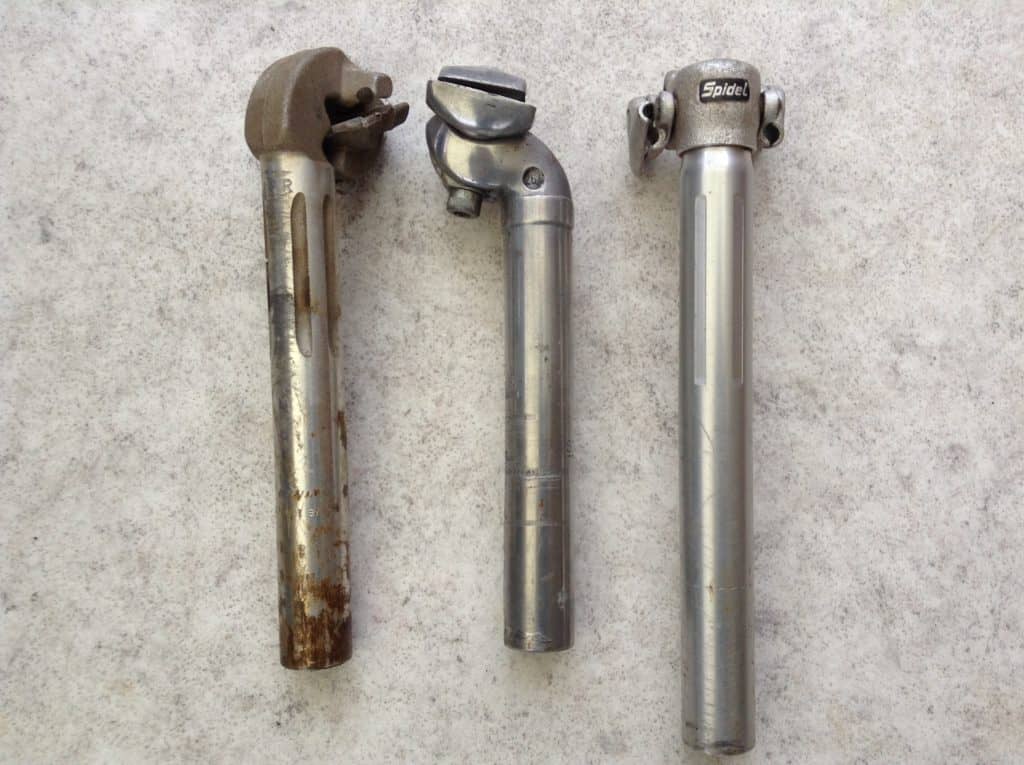
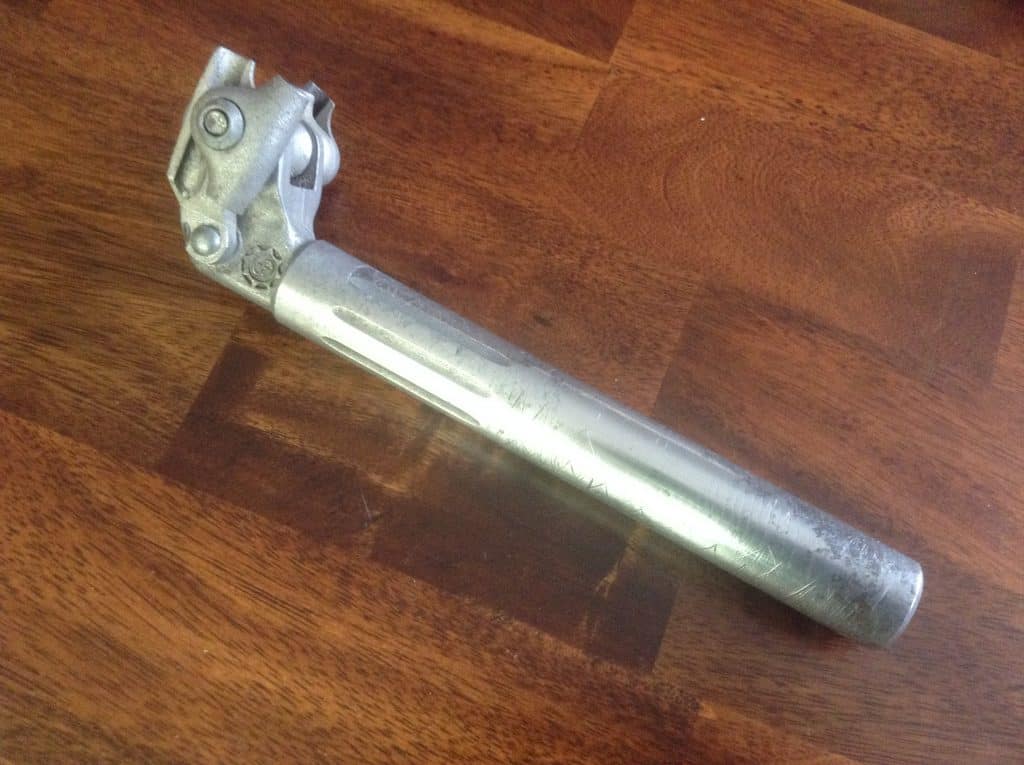
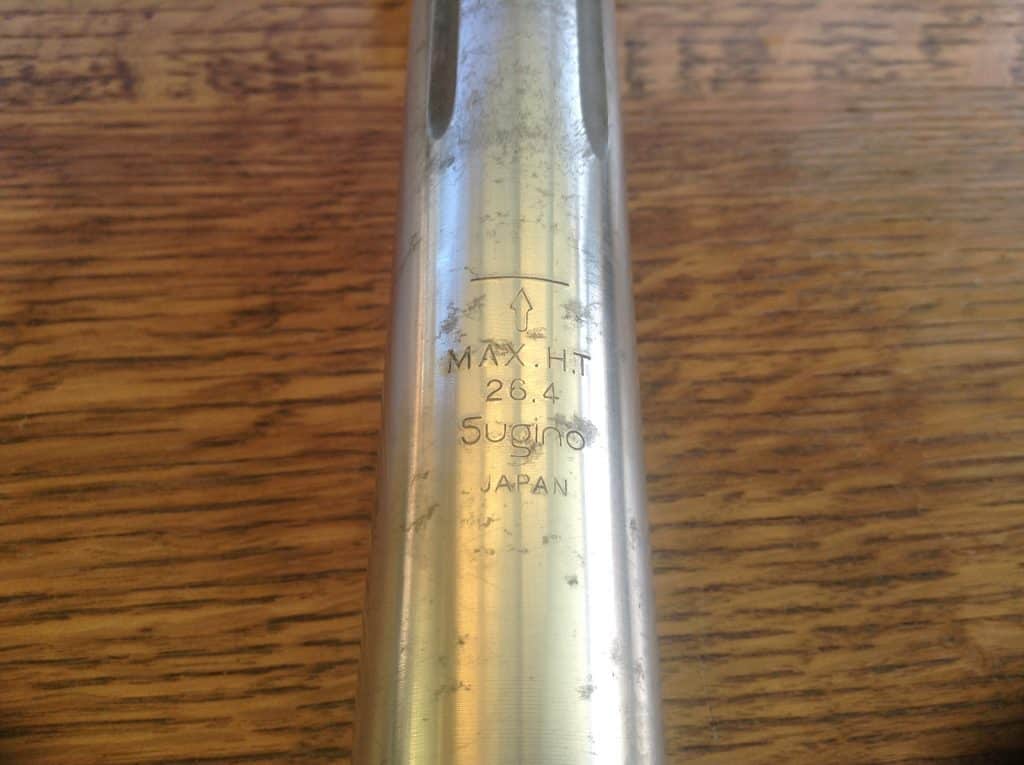
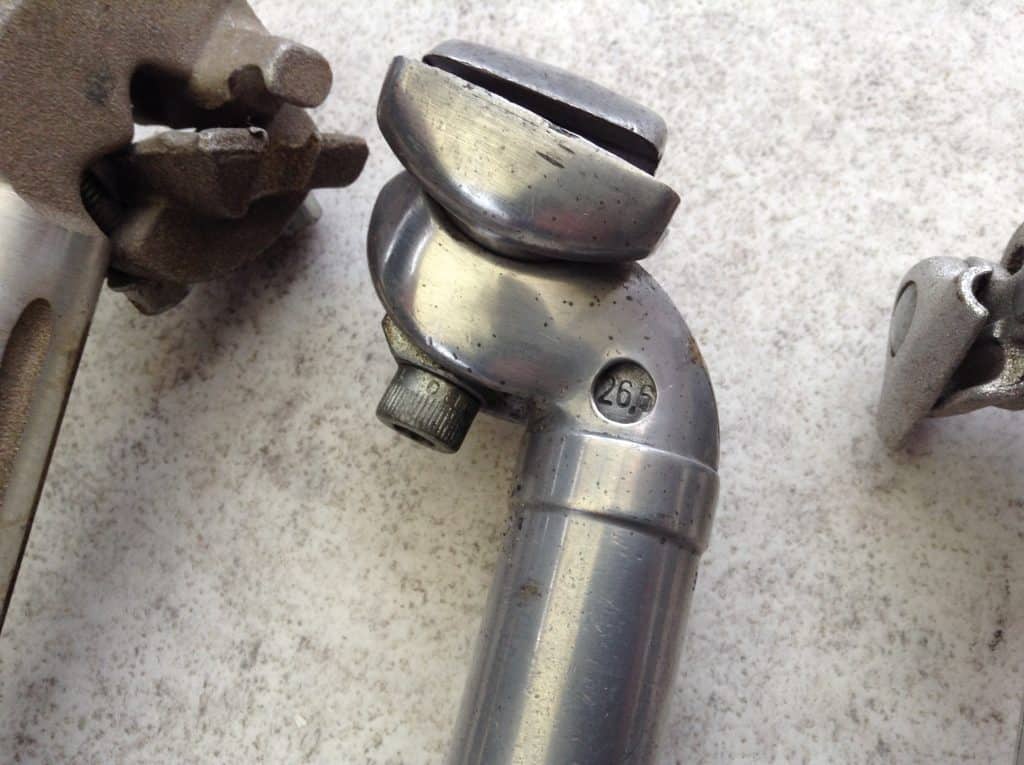
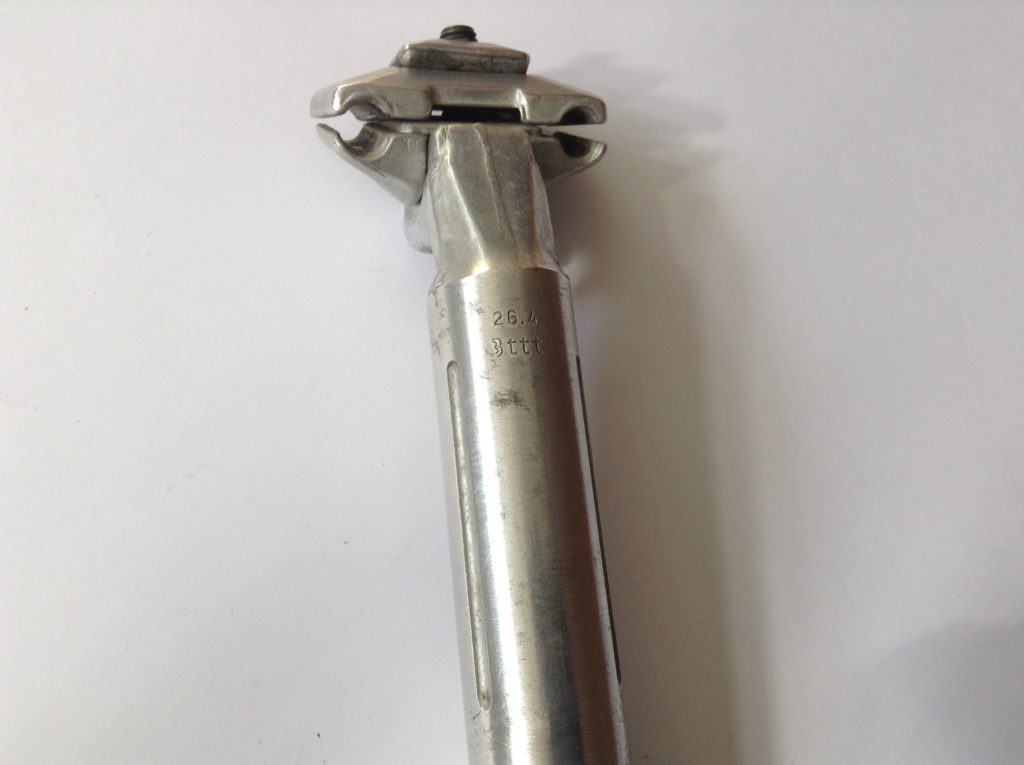
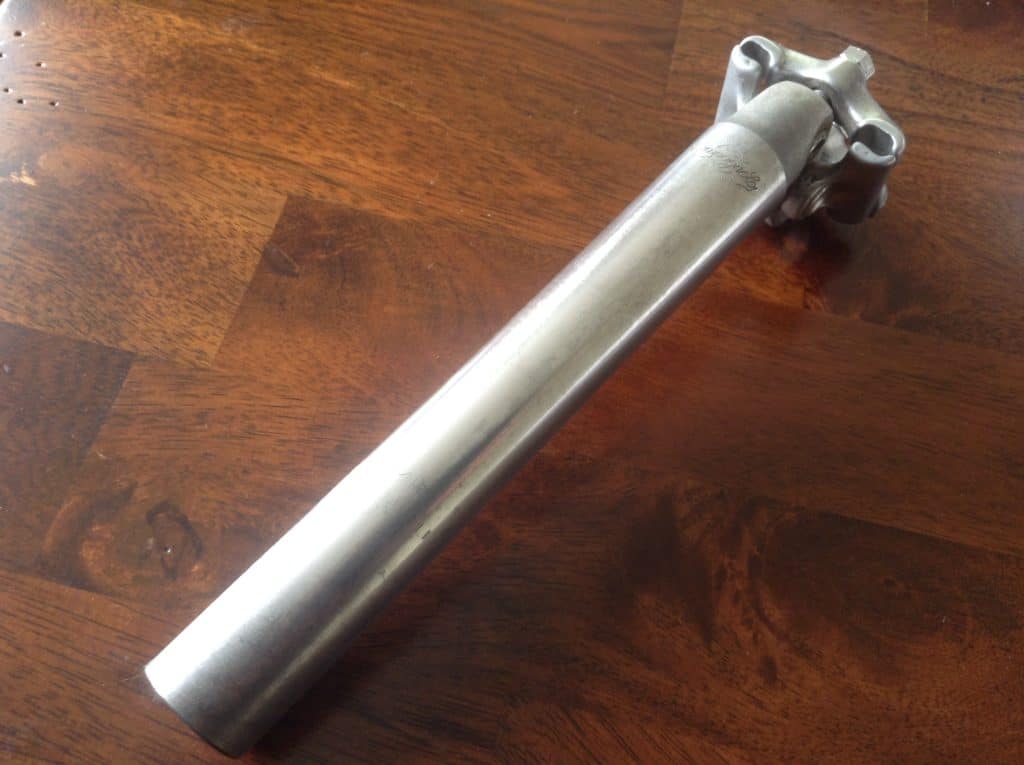
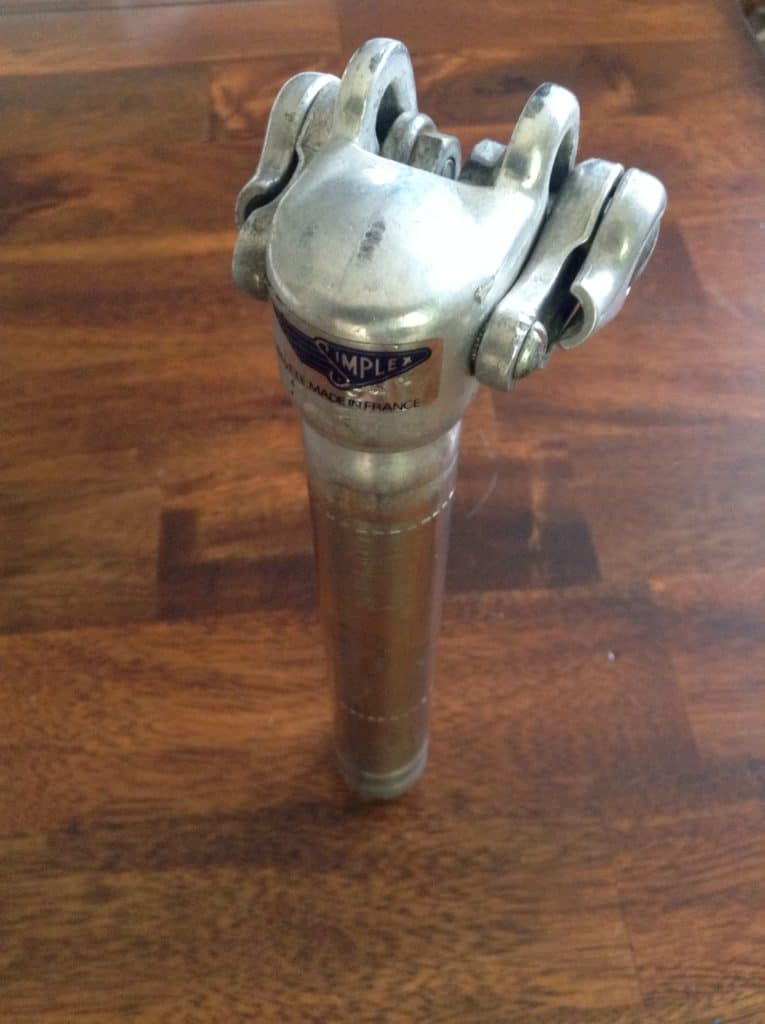
I have restored 1971 Px-10 with the Nervex pro lugs. Purchased a 26.6mm seat post and it
wobbles inside all the length of the tube. Slips all the way down and out without any friction or contact to the inside of the 531 seat tube. Definitely needs a 26.8mm post.
That’s an unusual size, but somehow typical of French seatposts during this period. It’s very confusing dealing with so many different sizes! Thanks for the input. Dominic
I recently bought a 26.4mm allow ITM seatpost (NOS) via Ebay to replace the steel Simplex setup in my newly acquired ’73 Gitane Tour de France. I got the seat post size from Sheldon Brown’s seatpost size database. https://www.sheldonbrown.com/seatpost-sizes.html
Just got it the other day…couldn’t wait to swap it out and hit the road. But wait..what?…it doesn’t quite fit. Waaaahhhh!
The one I received it stamped 26.4, and have every reason to believe that’s correct. But the Simplex is approximately .05 mm smaller.
I’m considering using fine grit emory paper and metal polish on the very bottom to see how much elbow grease it will take to “polish” it down to size. My brothers a structural engineer who warned to not take more than 4% off.
Suggestions?
Hi Martin, strangely enough, I have the same problem myself. I have a French bike, a custom build, which requires a 26.2mm seatpost. Typically, I have about eight French seat posts in my workshop but none is the right size. The nearest fit is a 26.4mm.
Like you, the question I’ve been asking myself is: can I file the post down by 0.2mm to fit the frame? It seems a lot more metal to remove than your 0.05mm, and I’m doubtful if it would be safe. However, I’m sure I’ve read somewhere on Sheldon Brown that a standard stem of 22.2mm can be filed down to fit a French steerer of 22mm. So just how much can you shave off?
I suppose the seatpost is the biggest load bearing part of the bike and needs to be structurally sound, so in my case I think I’ll buy a 26.2mm and play it safe. In your case, it seems a very little amount of metal to take off, but it stills seems that this is a serious issue, keeping in mind the catastrophic consequences if it does fail while riding. Another danger is having a stuck seatpost if you don’t file it uniformly.
Cheers
Dominic
Hi Dominic…thanks so much for the feed back. Here’s part two of the story…with success at the end.
A good mechanic I use, who was once a serious competitive road racer, told me yesterday that the original steel seatpost (w/Simplex clamp) may have become slightly out of round over time. She suggested I remove the clamp and roll the tube on a flat level surface…if so, it would roll one way or the other to get to the ‘flatter’ spot. I did, and it did!
And during removal, after loosening the seatpost clamp, I spun the saddle and tube 360º around inside the seat tube and found resistance at 90º and 270º…this resistance lessened a bit with about 3-4 spins. Perhaps this served to ‘re-round’ the top of the seat tube ID slightly?
Also, to clean up the scratches on the alloy seatpost from installation attempt, I spent about 45 minutes last night hand polishing a 30mm section on the bottom of the seatpost using Mothers Mag and Aluminum Polish. I was surprised at how effective it was…ruined 10 shop towels in the process…but was able to get it easily started down into the top tube. Turns out the 26.4. is the correct size! Once properly greased, I was able to install the alloy seatpost with little fanfare.
From the depth of the scratches/scraps I polished out of the bottom, I’d guess I removed just under .1mm by my polishing efforts. But fortunately don’t have to worry about compromising structural integrity, and I am sporting my new seatpost!
All the best to you in the new year!
-Martin
Martin,
Thanks for the update, I really enjoyed reading it and glad to hear you solved the problem. Yours is an interesting case of thinking outside the box, and discovering that the problem is actual solveable. It also makes sense that some seatposts will be slightly out of round by the stress they can incur, and from the damage they can sustain from removal too; it’s something I’ll keep in mind in the future if ever fitting one seems overly difficult.
Good luck with your classic Gitane TDF bike and safe riding! I imagine that Simplex post is sparkling after all the polishing!
Interesting…
I am looking for a seat post for Peugeot Mixte 1982 bike and found that 26,0 steel post I purchased from Amazon is too big. Ordered 25,6. We shall see.
It’s a tricky business, buying a seatpost for your bike. Being a 1982 bike it was also made when the French brands were moving over to standard threading and sizing. Hope 25.6mm is the one!
Thanks for writing all about this topic. I personally have about 6x Peugeot Bikes and have dealt with this a lot. Stuck seatpost due to it being the wrong size has been the toughest to deal with. Usually, after taking a stuck post out sizing is never the same nor is the tube completely round.
Yes, I’ve had many problems as you described. The worst feeling is when you buy a great bike and then discover you can’t move the seat post! Cheers.